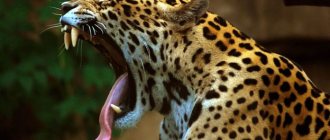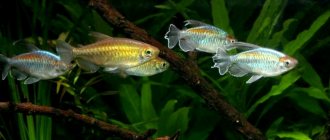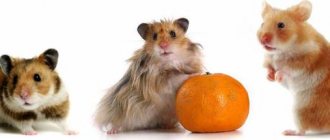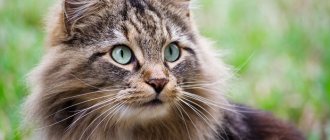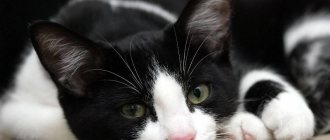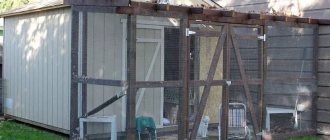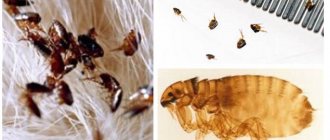Discus (lat. Symphysodon, English. Discus fish) is an incredibly beautiful and original fish in its body shape. No wonder they are called the kings of the freshwater aquarium.
Large, incredibly bright, and not only bright, but many different colors... why not kings? And as befits kings, unhurried and stately.
These peaceful and elegant fish attract the attention of aquarists like no other fish.
These aquarium fish belong to cichlids and are divided into three subspecies, two of which have been known for a long time, and one is relatively recently discovered.
Symphysodon aequifasciatus and Symphysodon discus are the most famous, they live in the central and lower reaches of the Amazon River, and are very similar in color and behavior.
But the third species, the blue discus (Symphysodon haraldi), was relatively recently described by Heiko Blecher and awaits further classification and confirmation.
Of course, at the moment wild species are much less common than artificially bred forms. Although these fish have huge differences in color from the wild form, they are much less adapted to life in an aquarium, are prone to diseases and require more care.
Moreover, this is one of the most demanding species of aquarium fish, requiring stable water parameters, a large aquarium, good feeding, and the fish itself is extremely expensive.
Habitat in nature
Homeland in South America: Brazil, Peru, Venezuela, Colombia, where they live in the Amazon and its tributaries. They were first introduced to Europe between 1930 and 1940. Earlier attempts were unsuccessful, but provided the necessary experience.
Previously, this species was divided into several subspecies, however, later studies have abolished the classification.
There are currently three known species that live in nature: green discus (Symphysodon aequifasciatus), Heckel discus or red discus (Symphysodon discus). The third species, described relatively recently by Heiko Blecher, is the brown discus (Symphysodon haraldi).
Appearance and features
Photo: Discus fish
Symphysodon discus have a round, disc-shaped body. The body is strongly flattened on the sides. The head of the fish is small. In males, the frontal part of the head is especially prominent. There are two slightly bulging eyes on the head. The fins on the back and the anal fin are low, but quite long. The fish has a beautiful, fan-shaped tail. The fins located on the belly of the fish are elongated. Often the fins are transparent, long and have bright spots on them. The spots are predominantly the same color as the body color. The color of fish of this species has a pattern of 9 vertical stripes. The colors of discus fish can be varied - bright blue, gold, green, golden fish.
Interesting fact: Discus fish can change their color depending on their condition. Stripes of different colors may appear or disappear on the body of the fish. If the fish is nervous or excited, the vertical lines on the fish can practically disappear, and the horizontal ones, on the contrary, become brighter.
During the breeding season, males can have a pointed seed duct. During spawning, female fish of this species develop a cone-shaped ovipositor. Sexual dimorphism in this species of fish is not expressed. In captivity, the size of an adult reaches 20-25 centimeters; in nature, larger individuals of this species are also found.
The lifespan of discus in the natural environment is from 10 to 16 years, however, in captivity the fish live less. This is due to constant stress, and forever favorable living conditions. In addition, complementary feeding also shortens the age of fish. However, they feel better in their natural environment. Discus fish have a calm disposition. They are slow. Move slowly. They live and swim in small flocks.
Discus species
Green discus (Symphysodon aequifasciatus)
It was described by Pellegrin in 1904. It lives in the central Amazon region, mainly in the Putumayo River in northern Peru, and in Brazil in Lake Tefe.
Green discus
Heckel's discus (Symphysodon discus)
Or red, was first described in 1840 by Dr. John Jacob Heckel, it lives in South America, in Brazil in the Rio Negro and Rio Trombetas rivers.
Heckel's discus Symphysodon discus
Blue discus (Symphysodon haraldi)
First described by Schultz in 1960. Lives in the lower reaches of the Amazon River
Blue discus Symphysodon haraldi
Description
This is a fairly large aquarium fish, disc-shaped. Depending on the species, it can grow up to 15-25 cm in length. This is one of the most laterally compressed cichlids, resembling a disk in shape, which is why it got its name.
At the moment it is impossible to describe the color, since a large number of different colors and types have been bred by amateurs. Even just listing them will take a lot of time.
The most popular: pigeon blood, blue diamond, turkis, snakeskin, leopard, pidgeon, yellow, red and many others.
But, in the process of crossing, these fish not only acquired bright colors, but also weak immunity and a tendency to diseases. Unlike the wild form, they are more capricious and demanding.
Some colors
Description of the breed
Discus is a large fish with a disc-shaped body. The length of individuals varies from 15 to 25 cm and depends on what variety they belong to. If you compare it with other cichlids, you will notice that discus fish have compressed sides, more than others, and because of this feature the fish got their name.
Today there are many species that differ from each other in color; it is quite difficult to describe them all. In addition, the variety of colors is truly amazing. But the most popular are the following breed varieties:
- Pigeon blood - a Thai hybrid obtained by crossing a striped turquoise discus and a red turkis. The main color of the scales is white, with longitudinal red stripes in the form of waves. The fins are also decorated with stripes - red and white. Another feature of pigeon blood discus is its red eyes.
- Pigeon - a fish whose eyes resemble blood-red rubies. Earlier individuals were covered in pigmented black spots, but through selective breeding they were bred out. The color of the pidgeons has become more harmonious and uniform.
- Blue Diamond – the body of the fish is high, round, strongly flattened. Wild individuals have an even, pale bluish coloration and red eyes. They were actively used in breeding work, and they gave rise to many breed varieties. Among the aquarium representatives there are both plain blue fish and those with blue scales.
- Snake skin - a fish with an extravagant color: its light body is covered with a large number of small red specks, which makes it look like the skin of a snake. The fish was bred in Thailand, based on the blue discus.
- Leopard – these individuals were the result of crossing a green discus and a red turkis. The original leopard coloring was formed from red spots scattered on a white background. These are large representatives of the species, growing up to 20 cm. “Leopards” have one feature - they are sensitive to lighting.
- Heckel's discus – has a calm, beige-pink color with turquoise stripes. There are vertical dark stripes around the body, the eyes are black-brown and practically do not stand out.
- Green discus - a fish with a greenish-brown body decorated with 9 dark stripes. Horizontal lines of turquoise color are located horizontally, they converge in the abdomen area, creating a solid color scheme. The color is not permanent and can vary from yellow to reddish hues.
- Cobalt – individuals have a blue body covered with stripes; this variation is considered classic. Often there are fish with a stripe running along the line of the eyes. With age, the stripes gradually fade and disappear.
- Marlboro Red – the color of the fish contains red or orange tones, there are several white stripes.
This is only a small part of the discus species. Modern breeders never cease to amaze, producing fish with brighter and more unusual colors. For example, you can find the “pigeon blood” species with the “checkerboard” color, “golden melon” discus, “golden albino”, “super red passion” and others.
But selective crossbreeding, although it made the fish unusually beautiful, had a negative impact on their immunity, weakening it. Their wild counterparts are stronger and more unpretentious.
Difficulty in content
Discus should be kept by experienced aquarists and is certainly not a suitable fish for beginners.
They are very demanding, and even for some experienced aquarists they will be quite a challenge, especially in breeding.
The first difficulty that an aquarist faces after purchasing is acclimatization to a new aquarium. Adult fish tolerate a change of residence better, but even they are prone to stress. Large size, poor health, demanding maintenance and feeding, high water temperature for keeping, all these points need to be known and taken into account before you buy your first fish. You need a large aquarium, a very good filter, branded food and a lot of patience.
When purchasing fish, you need to be very careful, as they are prone to semolina and other diseases, and moving will cause stress and serve as a stimulus for the development of the disease.
Water parameters and other nuances
The health of discus fish directly depends on the quality of water. Its temperature should vary between 28-33 degrees, pH should be 6.0-6.5, hardness 10-15 dH.
We recommend reading
About diseases of betta fish
You can put any soil in the aquarium or not put it at all. Soil is required when the container will be planted with plants.
Plants can also be planted or not planted at all, the main thing is that there are not too many of them. The best algae to use are Anubias, Echinodorus, Vallisneria, Hygrophila, Cabomba, and Limnophila.
Lighting should be dim.
Install an ozonation system. It helps remove excess microorganisms from the aquarium. True, this system can only be used by experienced aquarists, since an excess of ozone is detrimental to fish and you need to know exactly how to handle the equipment and control water parameters. You can also install a system with ultraviolet rays in the aquarium for disinfection.
Feeding
They mainly eat animal food, which can be either frozen or live. For example: tubifex, bloodworm, brine shrimp, coretra, gammarus.
But, fans feed them either branded food for discus fish, or a variety of minced meat, which includes: beef heart, shrimp and mussel meat, fish fillet, nettle, vitamins, and various vegetables.
Almost every fan has his own proven recipe, sometimes consisting of dozens of ingredients.
It is important to remember that these creatures are quite shy and inhibited, and while other fish are eating, they can huddle somewhere in the corner of the aquarium. For this reason, they are most often kept separately from other fish.
We also note that the remains of protein-rich food falling to the bottom cause an increase in the content of ammonia and nitrates in the water, which has a detrimental effect on the fish. To avoid this, you need to either regularly siphon the bottom, or not use soil, which is what amateurs often do.
Live food, especially bloodworms and tubifex, can cause various diseases and food poisoning, which is why they are most often fed either minced meat or artificial food.
Filming in the Amazon:
Keeping in an aquarium
For maintenance you need an aquarium of 250 liters or more, but if you are going to keep several fish, then the volume should be larger.
Since the fish is tall, the aquarium is preferably tall, as well as long. A powerful external filter, regular soil siphoning and weekly water changes are required.
Discus fish are very sensitive to the content of ammonia and nitrates in water, and in general to the parameters and purity of water. And although they produce little waste themselves, they eat mainly minced meat, which quickly disintegrates in water and pollutes it.
They prefer soft, slightly acidic water, and when it comes to temperature, they need water warmer than most tropical fish. This is one of the reasons why it is difficult for fish to find neighbors.
Normal temperature for keeping is 28-31°C, ph: 6.0-6.5, 10 - 15 dGH. With other parameters, the susceptibility to disease and death of fish increases.
These are very timid fish; they do not like loud noises, sudden movements, blows on glass and restless neighbors. It is better to place the aquarium in places where they will be least disturbed.
Planted aquariums are suitable as long as there is enough space for swimming. But, it should be taken into account that not all plants can withstand temperatures above 28 C well, and it is quite difficult to choose suitable species.
Possible options: didiplis, vallisneria, anubias nana, ambulia, rotala indica.
However, those amateurs who do not want money for fertilizers, CO2 and high-quality light quite successfully contain them in herbal gardens. However, these fish are valuable on their own, without any entourage. And professionals keep them in aquariums without plants, soil, driftwood and other decorations.
Thereby making caring for fish much easier and reducing the risk of disease.
When you first introduce fish into your aquarium, give them time to recover from stress. Do not turn on the lights, do not stand near the aquarium, put plants or something in the aquarium that the fish can hide behind.
Although they are not easy to care for and are quite demanding, they will bring a huge amount of satisfaction and joy to the dedicated and consistent aquarist.
Discus breeding
Such beautiful and modest fish are considered monogamous and choose a partner for the rest of their lives. To effectively work on producing offspring, it is advisable to purchase a school of 6-8 fish and let them decide on their own pairs. When they find partners, they begin to swim together and stick to each other.
In preparation for spawning, pairs need to be transplanted into a special spawning tank, which is characterized by soft and warm water. A prerequisite must be the presence of ultraviolet sterilizers, because they destroy all pollutants that can damage discus eggs. In this case, stimulating factors for spawning are considered to be a slight warming of the water and the use of special food, which contains an increased amount of protein.
The female lays her eggs on a vertical surface while their partners clean the area. This is the only time when discus fish can show aggression and drive neighbors away from them. The male then fertilizes the eggs and after two days hatching larvae are formed.
Throughout the spawning period, the couple takes care of the future children and removes dead eggs, fanning the clutch with their fins.
New fish that have grown noticeably are placed in a special compartment and separately fed with egg yolk. It is imperative to leave the light on at night for the first two months, otherwise they will not be able to find the food they need every 2 hours. As the fish grow, feeding decreases to 6 times, and for very adult fish - 3 times a day.
Compatibility
Unlike other cichlids, discus is a peaceful and very easy-going fish. They are not predatory and do not dig like many cichlids. This is a schooling fish and prefers to stay in groups of 6 or more, and does not tolerate loneliness well.
The problem in choosing neighbors is that they are slow, leisurely eaters and live at a water temperature that is high enough for other fish.
Because of this, and also to avoid introducing diseases, discus fish are most often kept in a separate aquarium.
But, if you still want to add neighbors to them, then they are compatible with: red neons, Ramirezi's apistogramma, clown loach, red-nosed tetra, congo, and various catfish in order to keep the aquarium clean, for example tarakatum, catfish with a suction cup instead mouths are best avoided, as they can attack fish with a flat body shape.
Some breeders advise avoiding Corydoras, as they often carry internal parasites.
Breeding
You can write more than one article about discus breeding, and it is better for experienced breeders to do this. We will tell you in general terms.
So, they spawn, form a stable pair, but very easily cross with fish of other colors. Breeders use this to develop new, previously unknown types of color.
Fish eggs are laid on plants, driftwood, stones, decor; special cones are now sold that are convenient and easy to maintain.
Although spawning can be successful in hard water, the hardness must be no higher than 6° dGH for the eggs to be fertilized. The water should be slightly acidic (5.5 - 6°), soft (3-10° dGH) and very warm (27.7 - 31° C).
The female lays about 200-400 eggs, which hatch in 60 hours. For the first 5-6 days of their lives, the fry feed on secretions from the skin produced by their parents.
About pet breeding
If the conditions in the aquarium are met, there is enough space and food, and the water is not colder than 30 degrees, the discus fish develop well and, upon reaching 10 months, the females are ready to reproduce. Their partners mature later, at 12 months.
If the fish lives in unsuitable water or crowded conditions, maturity occurs much later, at 1.5 years.
There are no particular differences between male and female discus. Boys are slightly larger, their fins are larger, and their behavior is more imposing. Ladies are more playful and active. However, the difference is not striking, and a beginner can easily confuse individuals of different sexes.
We recommend reading
Dragon fish polypterus: contents and types
Small fish live in schools, but when they mature, they independently find partners. You can create a pair forcibly, but this way there is less chance of successful reproduction.
The emerging pairs need to be deposited in the spawning tank. The tank size is at least 60 liters, the temperature is 31-32 degrees, plus a small amount of soil and plants. In general, the water parameters must be kept the same as in the aquarium that is familiar to parents.
The female lays eggs in a chosen place on the ground or on algae leaves. During one spawning, about 200-300 eggs appear.
